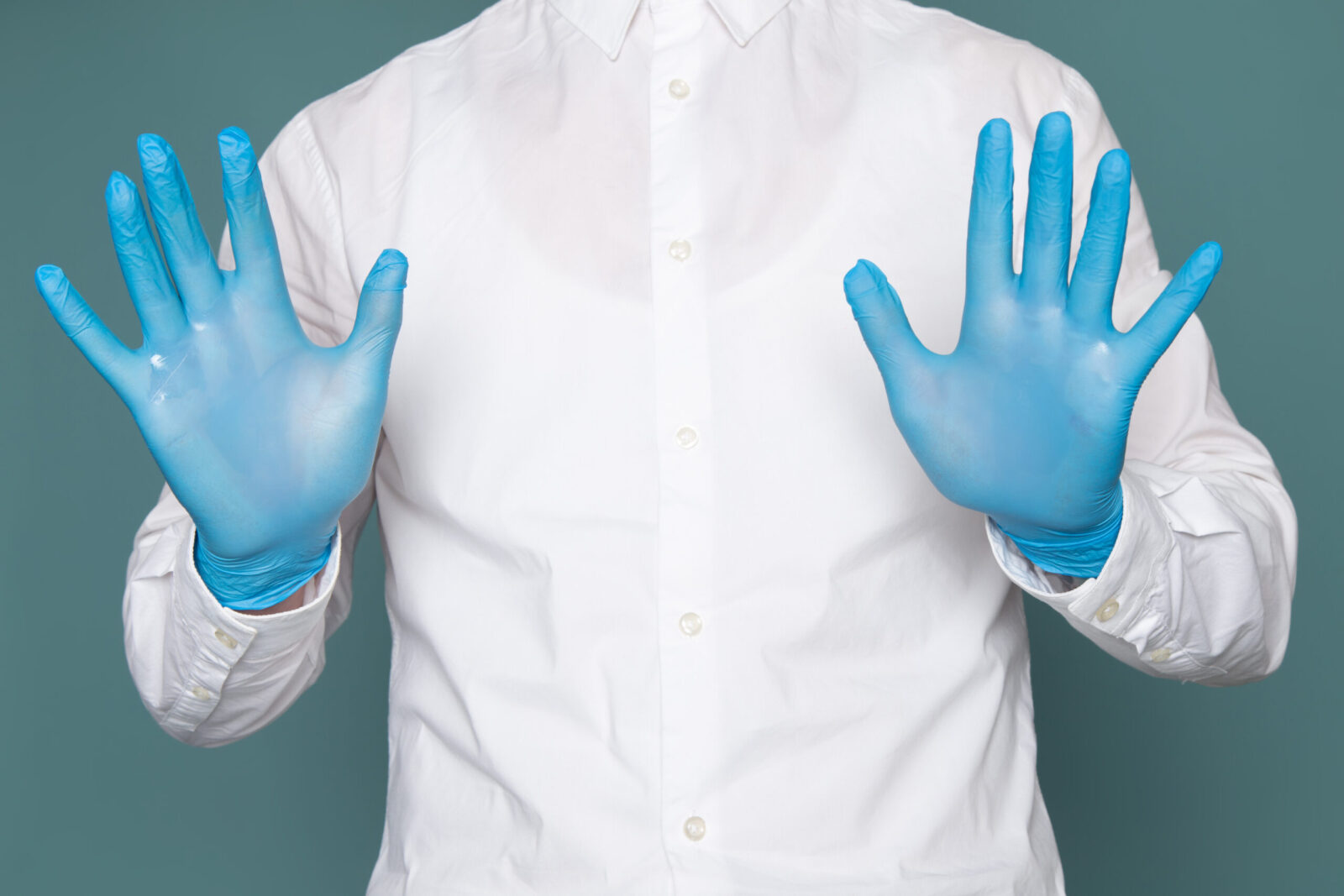
How To Choose The Best Anti-Fog Safety Glasses
Struggling to maintain clear vision in demanding environments? This guide is here to help. By the end, you’ll know exactly...

Get 20€ off on your first order!































Protection for the hands is necessary in many fields today, from healthcare and chemical handling to building and electrical work. Gloves are an important safety measure that keep workers away from dangers. But not each glove is the same. This is what the European Union called EN standards.
They make sure that gloves meet certain safety standards and protect against different types of risks. These rules help both the people who make gloves and the people who wear them make sure that the gloves are safe.
It’s not enough to just follow the EN standards for gloves; they’re also about safety, trust, and making sure that gloves do what they’re supposed to do.
The rules for testing gloves against dangers like cuts, punctures, chemicals, heat, and even germs are set by these standards.
When a glove meets the EN standard for a certain risk, users can be sure that it has been through a lot of testing and will work as expected in real life.
The EN 388:2016 standard covers gloves designed to protect against mechanical hazards, such as abrasion, blade cuts, tearing, and punctures. Let’s break it down:
In addition, the TDM Cut Resistance (EN ISO 13997) measures the force required to cut through the glove with a sharp blade. Ratings range from A (lowest protection) to F (highest).
Gloves must do more than just keep your hands safe when working with harmful chemicals or germs. The EN ISO 374:2016 standard makes sure that gloves keep chemicals from getting through and breaking down the skin.
This standard lists 18 chemicals, including common hazardous substances like methanol, acetone, and toluene, among others.
EN ISO 374-5 ensures that gloves can protect against bacteria, fungi, and even viruses. A glove that meets this standard can confidently be used in settings where exposure to infectious agents is a risk, such as healthcare or laboratory environments.
For workers exposed to high temperatures or open flames, the EN 407 standard is crucial. Gloves that meet this standard are tested against:
These ratings range from 1 (the lowest protection) to 4 (the highest).
In cold environments, gloves must insulate against the cold and prevent frostbite. The EN 511 standard evaluates:
The EN 16523-1:2015 standard is all about how long it takes for dangerous chemicals to get through the material of the gloves. It is especially important for people who work with risky chemicals to make sure that their gloves protect them well for a long time. Gloves are grouped by how long it takes for an object to pass through them. There are six performance levels, with level 6 providing the best protection (480 minutes or more).
People who work in places with atomic radiation or nuclear contamination need to wear special gloves. The EN 421 standard makes sure that these risks are covered by gloves. These gloves need to be tried to make sure they can protect against radiation and germs while still keeping the person safe.
Welders need gloves that can withstand both heat and mechanical risks. The EN 12477 standard combines several other standards (such as EN 388 and EN 407) to ensure gloves provide sufficient protection for welding tasks. These gloves come in two types:
Gloves that meet the EN 10819 standard can help lower the risk of hand-arm vibration syndrome (HAVS) in people who use buzzing tools a lot. These gloves are tried to make sure they can protect the person and reduce vibrations.
When working with live electricity, gloves that meet the EN 60903 standard are essential. These gloves protect the wearer from electric shock, with ratings based on the voltage they can safely withstand. To give you an idea, Class 00 gloves can handle up to 500 volts, while Class 4 gloves can handle up to 36,000 volts.
Gloves are used by medical workers to protect themselves from both biological and chemical dangers. Medical gloves are safe to use because they meet the EN 455 standard. This rule is made up of four parts:
Not only should you choose a glove that fits well and looks good, but you should also make sure that it meets the EN standards for your needs.
There is an EN standard that makes sure the glove will work no matter what the situation is: sharp items, dangerous chemicals, high heat or cold.
Both employers and workers can make the workplace safer by knowing and following these rules. This will lower the chance of accidents and injuries.
Remember that it’s always better to spend money on good gloves that meet the standards than to deal with the problems that come up from not having enough protection. For that reason, before you choose your next pair, make sure they’ll work.
Thank you! You've signed up for our newsletter.











Struggling to maintain clear vision in demanding environments? This guide is here to help. By the end, you’ll know exactly...

Electricians across Europe face unique challenges that require reliable safety glasses to ensure both protection and efficiency. Whether safeguarding against...

Selecting the right food storage containers is crucial for maintaining food freshness, quality, and safety. The material you choose directly...

Struggling to maintain clear vision in demanding environments? This guide is here to help. By the end, you’ll know exactly...

Electricians across Europe face unique challenges that require reliable safety glasses to ensure both protection and efficiency. Whether safeguarding against...

Selecting the right food storage containers is crucial for maintaining food freshness, quality, and safety. The material you choose directly...
Get 20€ off on your first order!
Save 30% by buying directly from brands, and get an extra 10€ off orders over €100
Save 30% by buying directly form brands, and get an extra 10€ off orders over €100